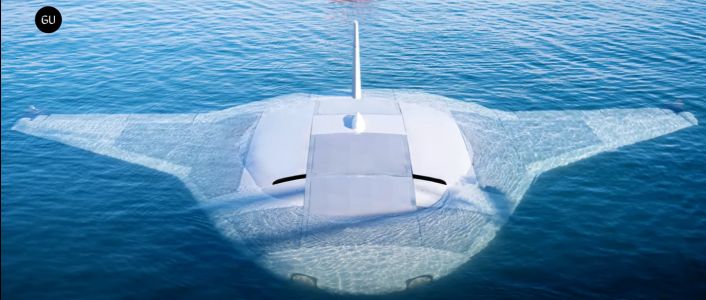 The Ukrainian Magura V5 naval drones have proven to be fast, deadly, and cheap. As we posted last August, Ukrainian naval drones are redefining warfare in the Black Sea; quite an accomplishment for a beleaguered nation that almost wholly lacks a navy.
The Ukrainian Magura V5 naval drones have proven to be fast, deadly, and cheap. As we posted last August, Ukrainian naval drones are redefining warfare in the Black Sea; quite an accomplishment for a beleaguered nation that almost wholly lacks a navy.
Recently, Northrop Grumman revealed an underwater drone named the Manta Ray. The drone, built for the Defense Advanced Research Projects Agency (DARPA). The drone has been under development since 2020. The Manta Ray represents a new class of unmanned underwater vehicles (UUVs), that were developed to perform long-duration, long-range military missions with as little human oversight as possible. The craft is also capable of harvesting energy from the ocean.
As described by Axios, the uncrewed underwater vehicle Manta Ray’s almond-shaped body, rounded nose, horizontal fins and vertical tail can be spotted in the 360-degree video shared by maker Northrop Grumman.
- While its dimensions are not publicly discussed, the UUV is considered “extra large” in military parlance. It dwarfs nearby people and boats.
- The drone is modular, meaning it is easily taken apart and reassembled in the field. The Manta Ray prototype was shipped cross-country in pieces for at-sea assessments earlier this year.
- The vessel glides through the water, dips below the waves and resurfaces in the clip. Little wake is seen.
The Manta Ray is sufficiently large that it was spotted by users of Google maps at the Port Hueneme naval base in California.
Which model of naval drone — the Ukrainian Magura 5 or the US Manta Ray — will prove to be more successful? That will, no doubt, depend on the mission and circumstances.
Northrop’s Autonomous ‘Manta Ray’ Drone Completes In-Water Test

I remember the conundrum of writing in space, NASA spent millions developing the Platignum pen when Russian cosmonauts used a pencil.
I also remember the USA gave us the KISS theorem. Keep It Simple Stupid.
I have watched the Houti’s sea-drones and it worries me for all NATO warships and our valued seamen.
This is a fascinating read! The advancements in naval drone technology are truly remarkable. The Ukrainian Magura V5’s speed and cost-effectiveness, especially for a country with limited naval resources, are impressive. It’s a testament to innovation under pressure. On the other hand, Northrop Grumman’s Manta Ray offers a glimpse into the future of unmanned underwater vehicles with its long-range capabilities and energy-harvesting technology. The modular design is particularly intriguing, suggesting flexibility and ease of deployment in various locations.
It will indeed be interesting to see which model proves more effective in different missions. The Magura V5 seems ideal for immediate, tactical applications, while the Manta Ray might excel in long-term, strategic operations given its advanced features. Both drones highlight how rapidly this technology is evolving, potentially reshaping naval warfare and underwater reconnaissance. I can’t wait to see further developments and real-world applications of these incredible machines.